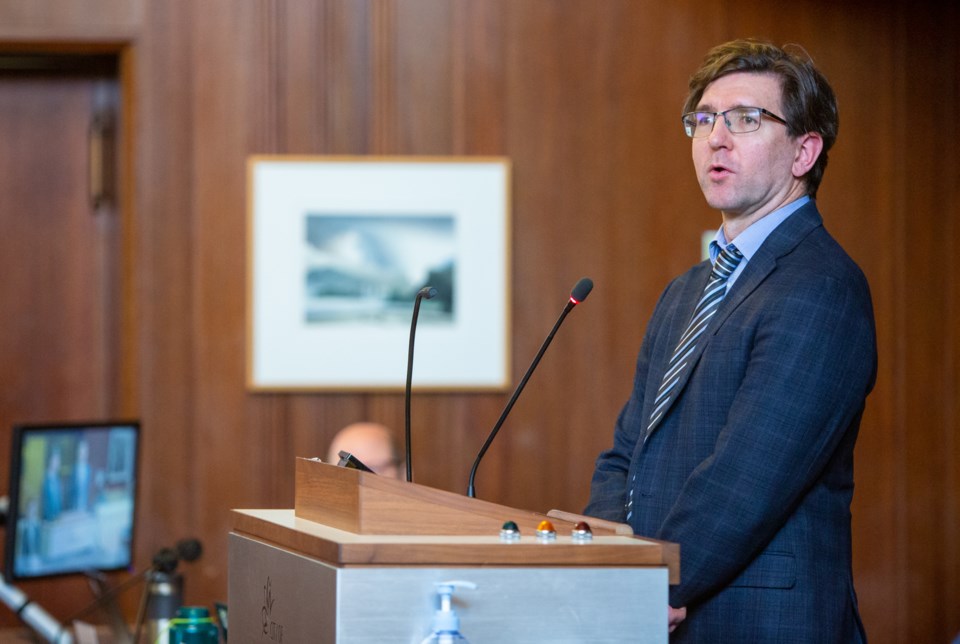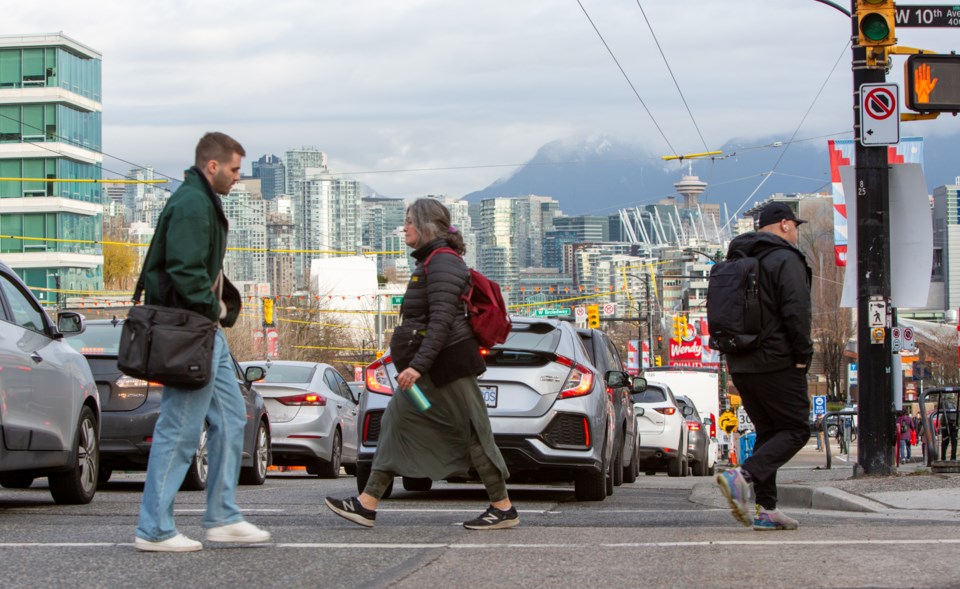First the good news: Vancouver cut its carbon pollution by 10 per cent from 2007 to 2021.
“So we do look at that as a success, particularly in the context of a growing population and a growing economy,” said Matt Horne, the city’s manager of climate mitigation, accountability and outreach, in a presentation to city council Wednesday.
Retrofits of city buildings, including community centres, adding new electric vehicles to the city’s fleet, improved capacity on bus routes and renewable energy investments were among the achievements cited to help reduce pollution.
Over that 14-year period, a network of separated bike lanes were also added across the city, bike and car shares increased and the Canada Line and Evergreen Line began operating.
The concerning news: Vancouver is not on track to meet its goal to further reduce emissions to 50 per cent by 2030 and be carbon neutral by 2050.
“That's just the reality of where we're at, at the moment,” said Horne, who identified several factors keeping Vancouver from reaching its targets, including the need for changes to policy and zoning, infrastructure upgrades, building code updates, people not shifting to transit, more electric vehicles and chargers, heat pump conversions and reallocating road space for pedestrians and cyclists.

$230-million funding gap
Money to fund the city’s $500-million climate emergency action plan is also crucial to reaching targets, with council learning Wednesday there was a $230-million funding gap in the five-year strategy.
However, Brad Badelt, the city’s director of sustainability, said after the presentation that meeting 2030 targets “is not exclusively about the money,” although the city continues to lobby senior governments and examine other revenue streams.
“We do need more funding for some of these actions, and active transportation is one that I often point to because it's better sidewalks, it's more and better protected bike lanes,” Badelt told Glacier Media. “Those are all things that cost money. It's not like you can regulate someone to walk or bike, right?”
Both Horne and Badelt believe that if the city is going to see significant progress in further reducing emissions, it has to focus on natural gas use in homes and buildings — which accounts for 55 per cent of Vancouver’s carbon pollution — and gas-powered vehicles, which generate 40 per cent of emissions.
Last year, council approved requirements for carbon pollution limits for large office and retail buildings, but they won’t be in place until 2027. Detached homes are also a high priority for regulation, according to a staff report that was before council.
“However, the design of time-of-use requirements for heating and hot water equipment in detached homes does require further work to resolve legal and resourcing challenges, which has delayed implementation,” the report said.
10,400 registered electric vehicles in Vancouver
The report said early uptake of electric vehicles is encouraging, with Insurance Corporation of B.C. data showing 10,400 of 359,324 registered vehicles in Vancouver in 2021 were zero emission.
Still, the report added, the transition from gas-powered vehicle to electric has to “accelerate significantly” for the city to meet its 2030 target to have 50 per cent of kilometres driven on Vancouver roads to be done by zero-emission vehicles.
The previous council’s decision not to implement the proposed carbon pollution surcharge as part of the “climate emergency parking program” — which would have generated $15 million to $20 million per year — means the city needs to explore alternative ways to encourage greater uptake of electric vehicles.
“Also, funding pressures make it difficult to provide the range of public charging options needed to support residents and businesses that don’t have reliable access to home or workplace charging,” the report said.
The current council recently scrapped city staff’s feasibility work on a transport pricing system for the metro core of Vancouver. Even if such a system would have been implemented, revenue was not factored into the city’s $500-million climate plan.
Continued reliance on fossil fuels
The report also concluded that achieving the 2030 target of 90 per cent of all trips by residents to be within an easy walk or roll of daily needs “is unlikely based on the current rate of development and rezoning challenges.”
Though carbon pollution was cut by 10 per cent between 2007 and 2021, staff noted the continued reliance on fossil fuels means emissions are sensitive to yearly fluctuations in activity.
In 2021, for example, winter heating demand was greater compared to the year before, and transportation emissions rebounded to nearly pre-pandemic levels after a slower 2020.
“These sensitivities will diminish over the long term as the community transitions to zero-emission buildings/vehicles and active modes of transport,” the report said.
Concerns over costs of the climate plan led to Coun. Sarah Kirby-Yung successfully introducing an amendment that directed staff to prepare an overview “on how much of the [city’s] operating budget is directly related to climate action, what that funding is used for, and how it benefits the city and residents, including positive impacts on health and air quality and helping avoid or reduce future costs of coping with climate impacts.”
Council also requested a “carbon budget” that more thoroughly presents the current and anticipated costs and benefits of the city’s climate work.





